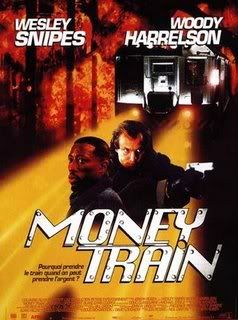 book Details
book Details•Hardcover: 452 pages
•Publisher: Addison-Wesley Professional; 1st edition (December 30, 1997)
•Language: English
•ISBN-10: 0201199300
•ISBN-13: 978-0201199307
book DescriptionThe concepts and practice of software architecture are introduced–what a system is designed to do and how its components are meant to interact with each other. The authors cover not only essential technical topics for specifying and validating a system, but, for the first time, emphasize the importance of the business context in which large systems are designed. .
From the Inside FlapSoftware architecture is an important field of study that is becoming more important and more talked about with every passing day. But, to our knowledge, there exists little practical guidance on how to manage software architecture within a real software development organization from a technical or from a managerial perspective. This book has emerged from our belief that the coupling of the software architecture of a system and its business and organizational context has not been well explored.
Our experience with designing and reviewing large and complex software-intensive systems has led us to recognize the role of business and organization in the design of the system and also in its ultimate success or failure. Systems are built to satisfy an organizationis requirements (or assumed requirements in the case of shrink-wrapped products), and these requirements determine the extent to which a system must meet performance targets, be highly available, interoperate with other systems, or be designed for long lifetimes. These properties of a system are constrained by the systemis software architecture; or, to put it another way, the desire to achieve these properties influences the design choices made by a software architect.
In this book we demonstrate this coupling through the use of case studies drawn from real systems, including the following: In Chapter 7, we show how the desire to quickly and easily share documents within an organization, with a minimum of centralized control, led to the software architecture of the World Wide Web. In Chapter 11, we discuss how the extreme safety requirements of air traffic control led one company to build a system around an architecture for achieving ultrahigh availability. In Chapter 14, we describe how the distribution of the subsystems of a flight simulator to different remotely located developers led to an architecture geared to enable the easy integration of these subsystems. In Chapter 16, we explain how the need to satisfy simultaneous product deliveries led (in fact, forced) one company to adopt an architecture that enabled the company to economically build a set of complex, related software systems as a product line.
These and other case studies show how the architectures flow from requirements of organizations and their business models, from the experience of the organizationis architects, and from the prevailing design climate.
In addition, we discuss how architectures themselves can be powerful vehicles for influencing all of the preceding. A successful product or set of products can influence how other products are built; certainly, the case study of the software underlying the World Wide Web is a good example of this. Before this system existed, there was far less network awareness; less thought was given to accessibility of data; and security was the concern of only a few organizations, typically financial institutions and government agencies.
This book is aimed at the software professionalothe person designing and implementing large software-intensive systemsoand at the managers of software professionals. It does not contain, for example, detailed financial justification for using a software architecture, for doing early architectural analyses, or for investing in a product line approach to building software. We provide only anecdotal evidence to support the claims that these pay off, although we passionately believe they do.
A software architecture is the development product that gives the highest return on investment with respect to quality, schedule, and cost. This is because an architecture appears early in a productis lifetime. Getting it right sets the stage for everything to come in the systemis life: development, integration, testing, and modification. Getting it wrong means that the fabric of the system is wrong, and it cannot be fixed by weaving in a few new threads or pulling out a few existing ones, which often causes the entire fabric to unravel. Also, analyzing architectures is inexpensive, compared with other development activities. Thus, architectures give a high return on investment partially because decisions made for the architecture have substantial downstream consequences and because checking and fixing an architecture is relatively inexpensive.
We also believe that reusable components are best achieved within an architectural context. But components are not the only artifacts that can be reused. Reuse of an architecture leads to the creation of families of similar systems, which in turn leads to new organizational structures and new business opportunities.
A large percentage of this book is devoted to presenting real architectures that were designed to solve real problems in real organizations. We chose the case studies to illustrate the types of choices that architects must make to achieve their quality goals and to show how organizational goals affect the final systems.
In addition to the case studies, this book offers a set of techniques for designing, building, and evaluating software architectures. We look at techniques for understanding quality requirements in the context of an architecture and for building architectures that meet these quality requirements. We look at architecture description languages as a means of describing and validating software architectures. We look at techniques for analyzing and evaluating an architectureis fitness for its purpose. Each of these techniques is derived from our experience, and the experience of our colleagues at the Software Engineering Institute, with a variety of software systems. These systems range up to millions of lines of code and are large-team, multiyear development efforts.
We have also provided a visual language for describing software architectures that contains enough expressiveness to describe both procedural and object-oriented systems and enough generality to describe systems at any granularity: a division of functionality, a set of software structures, a set of hardware structures, or any combination of these. Although a visual notation is not, in itself, documentation of an architecture, it is an integral part of such a documentation. One of our complaints with the state-of-the-practice in architecture today is the vagueness of architectural descriptions. We hope that the visual language described here is a contribution to the field, aimed at increasing the effectiveness of architectural documentation.
The book targets software professionals, or students who have knowledge and experience in software engineering, and we anticipate the following three classes of readers:
Practicing software engineers who wish to understand both the technical basis of software architecture and the business and organizational forces that are acting on them Technical managers who wish to understand how software architecture can help them to supervise the construction of systems more effectively and improve their organizations Students in computer science or softwar
e engineering who might use this book as supplemental reading in a first or second software engineering course
Although business issues are discussed throughout the book (for example, how an architecture affects an organizationis ability to compete in a market or how the architecture underlying a product family affects time to market), we present this material without going into the business issues in great depth and without using business jargon. We are, after all, software engineers. The technical sections are presented in more depth. These sections represent current work in the field of software architectureothe point where research meets practice; they are the philosophical foundations of the book. The case studies illustrate these technical foundations and show how they are realized in practice. However, we have written the case studies in such a way that expertise in the application domain from which each case study was drawn is not required. You will not need to be a pilot to understand either the air traffic control system or the flight simulation case studies. However, you will need to have a reasonable background in computer science, software engineering, or a related discipline to benefit from the lessons of the case studies.
One final note on the organization of the book. Software Architecture in Practice is not intended to be a prescriptive method for architectural design. In fact, we believe that it is impossible to satisfactorily create such a prescriptive design method. Any design involves trade-offs: Modifiability affects performance, security affects modifiability, scalability affects reliability, and everything affects cost. Any prescriptive method implicity or explicitly assumes that some of these qualities are more important than others and guides users toward the maximization of that goal. Our feeling is that although such an approach may be appropriate in a specific domain, it cannot possibly work in general. Quality requirements are different from organization to organization and from year to year.
By way of contrast, we offer a toolbox approach to design. We believe that different architectural tools and techniques are appropriate for different situations and different quality goals. No single technique will ever suffice. So, we present a number of different architectural tools (layering, multiple views, patterns, blackboards, and so forth) and techniques (analysis methods, integration strategies, engineering principles) and illustrate their usage in different business and technical contexts.
Not surprisingly, most of the case studies use a mix of tools and techniques because they were chosen to illustrate how software architecture was the foundation for a successful system. These systems were successful precisely because they chose the right tools and implemented them using the right techniques. Anything less would not have resulted in a successful system, as we hope to persuade you in the coming pages. 0201199300P04062001
Download.






























